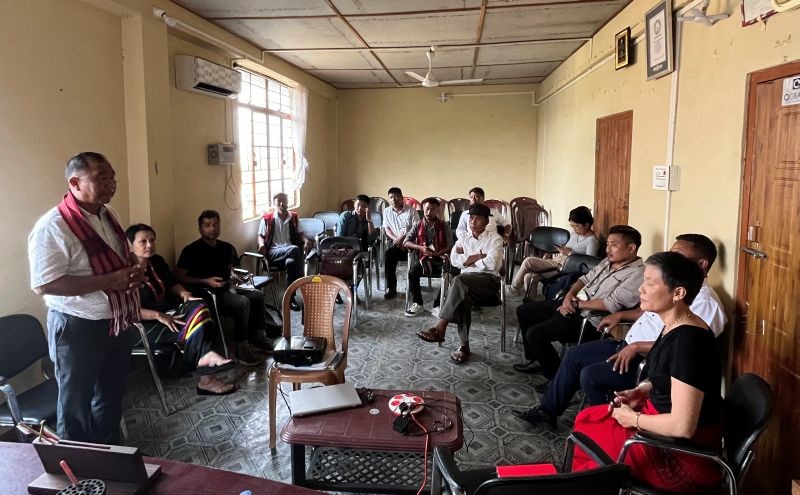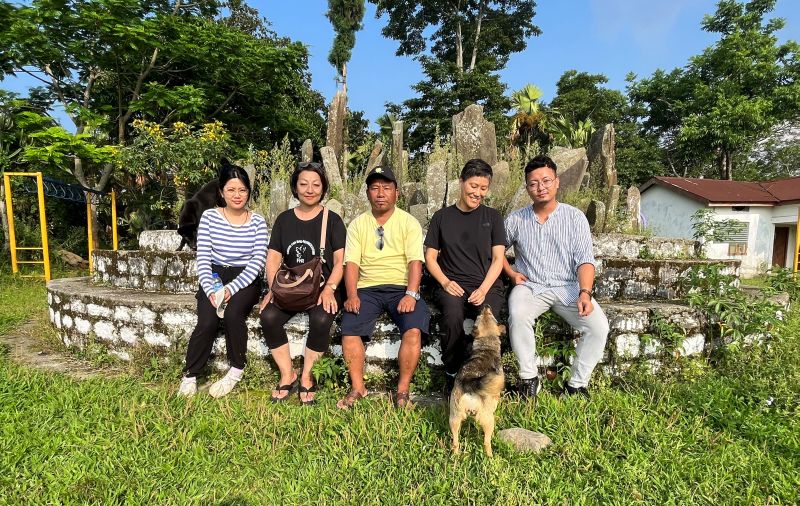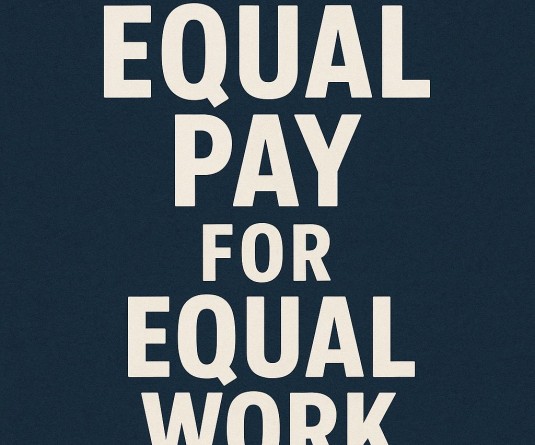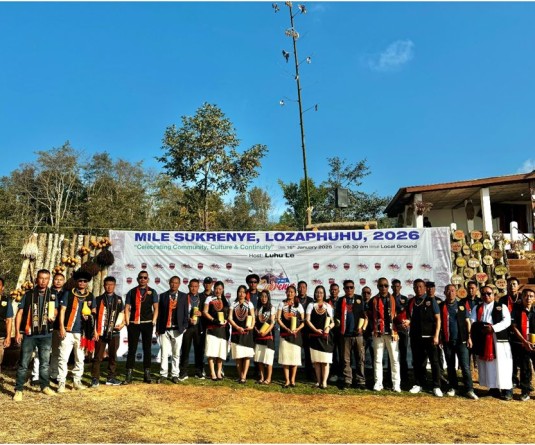FNR and RRaD members meeting with the Konyak

Learning from Mon District
Kuvethilu Thuluo, Manngai H Phom, Rev Dr Ellen Jamir & Dr Dolly Kikon
Overview
The Forum for Naga Reconciliation (FNR) has been facilitating a process to develop and enable a Naga response around the future care of Naga ancestral human remains. These are currently housed in the Pitt Rivers Museum (PRM), Oxford, UK.
The FNR is committed to the underlying principle that the future of the Naga ancestral remains shall be determined by the people. To elicit and document a Naga response, Recover Restore and Decolonise (RRaD) – a team formed by the FNR – has been studying and networking with Indigenous experts, leaders and elders, conducting participatory action research, and generating public awareness.
RRaD’s core aim is to engage in open dialogue and consultation across the Naga community about the future of Naga ancestral remains. RRaD’s approach is centred on understanding the trauma and violence of colonisation, an experience that is universal across Indigenous societies.

FNR and RRaD members with Kaiyan Konyak, the Konyak Union Chi Unit President in front of the Shaojong at Chi Village.
Over the last few months RRaD organised focus group discussions and public consultations in Dimapur, Kohima, and Longleng. From June 2 to 4, 2023, a FNR and RRaD team comprised of Rev Dr Ellen Jamir, Dr Dolly Kikon, Manngai H Phom, and Kuvethilu Thuluo travelled to Mon Town, Konyak Baptist Bumeinok Bangjüm (KBBB) Mission Centre, and Chi and Longwa villages. They participated in a series of group interactions, as well as personal conversations on issues of the repatriation of Naga ancestral remains, healing and reconciliation.
The team visited Mon after the Konyak Union (KU), the apex body of the Konyak Nagas, asked its member Hawang Wangshato initiate consultation with the FNR. They wanted to foster a better understanding of the processes and issues around repatriation of the ancestral remains.
Confronting Colonial Stereotypes and Labels
On June 2, the KU President, Tingthok Konyak, welcomed the FNR and RRaD team on behalf of the community. The KU leaders explained how their community discussions on repatriation began after the FNR initiated the debate.
Specific questions about repatriation of material artefacts were also raised but the FNR and RRaD team clarified that the current process was focused only on ancestral human remains. The team, however, acknowledged that repatriating material artefacts is an ongoing process for many other Indigenous communities across the globe.
The team explained that the process of legal and administrative debates involved around repatriation could take many years to unfold. This will require the commitment, active support and participation of the Naga people.
While sharing his views on repatriation, the KU President touched on the continuing violence and trauma of colonisation. While he believed that the ancestral human remains belong to all Naga people, he wondered if a sizeable number come from the Konyak homeland. If this is the case, they could have been taken from present day Nagaland, Arunachal Pradesh, Assam, or Myanmar. Tingthok said, “These divisions created since the British times continue to hurt us. First, we were split into India and Burma. Later, we were further separated into Assam, Nagaland, and Arunachal Pradesh by the Indian government. Our Konyak Nagas are split into states and countries.” The KU President asserted that the division of the Konyak land was a colonial project, and the trauma of that division continues to cause great suffering and grief to this day.
European anthropologists such as Christoph von Fürer-Haimendorf also played an active role in propagating the colonial trope of nakedness and backwardness. These continue to haunt the Konyak Nagas. Tingthok said his maternal grandfather, Maowang, Chief Angh of Longkei, and the Tenang River were featured in Haimendorf’s book, The Naked Nagas. Tingthok pointed out that the book mainly draws on Chi, Wakching, and Longkei villages. Tingthok also heard of stories of heads and other human remains in the village which were all buried in 1952 after Rev Longri Ao arrived as a missionary.
After watching the RRaD video, Working towards Return with the Pitt Rivers Museum, HA Hongnao Konyak, KU Vice President pointed out that the ancestral heads decorated with mithun horns preserved in the museum are probably from the lower and upper Konyak regions. These embellished heads, he reminded us, were not trophy heads of enemies but of loved ones. Hongnao talked of the old practices of funeral rites from the pre-Christian era. The dead bodies of family members were placed on elevated treetops to decompose, and the skulls were later boiled and cleaned. They were then preserved in the surrounding forests. Adding mithun horns on both sides was part of the last rites. While the practice has stopped, it stays alive in folklore and memory.
Through these conversations, the Konyak elders emphasised that the presence of ‘heads’ does not automatically denote headhunting practices. Therefore, repatriation of ancestral human remains is a step in this journey to decolonise Naga history and break the colonial stereotypes that have long haunted Naga people’s past and present. More understanding of the pre-Christian Naga culture and practices is needed, rather than focusing our understanding and discourse on colonial anthropologists and administrators whose notes and books continue to impact negatively by creating stereotypical images and perspectives about Naga practices and beliefs.
Reflecting on the discussions with KU leaders, RRaD member, research scholar at Cotton University Guwahati, Manngai H Phom said, “Memory is a selective process of taking only specific things which concern the person, a feeling, or even narratives, which makes it biased by nature. Sometimes memories are also directed by narratives, associated meanings, and histories… What the white people have taken away from the Nagas can be viewed as a systematic method of narrative building on Nagas. With colonialism Nagas were made to feel that all that we practiced was tagged as something that belong to the darkness. Along with the prohibition of head hunting, all other cultural practices which were good were also erased and thrown away. Christianity was thrusted upon us with westernization as the undercurrent which is not supposed to be our culture. Our Naga cultures became the opposition of everything that the white coloniser possessed; we were called naked in opposition to the clothed colonizers and our practices were aligned to satanism in comparison to the Christian identity they were trying to preach.”
After KU learned about the repatriation initiative, they were keen to receive the remains of their ancestors and forebearers. Hongnao stated that previously they were unaware of any Konyak remains being in the museums. Watching the RRaD documentary, they could identify village names and cultural artefacts that were clearly of Konyak origin.
Rev Ellen Jamir explained, “Some of the remains are marked for villages that are unknown. However, they sound like Konyak names. They maybe from Konyak villages in Arunachal Pradesh or even Burma. It remains unclear. This is one of the reasons why we need more community researchers to look at these discrepancies in colonial records.”
Kaiba Konyak, KU Cultural Secretary raised a question on the scientific care, handling, and respect for ancestral remains, “After we bring the remains back, where do we keep it? We know the condition of Nagaland. Without plans for proper care, the remains will deteriorate.” Some of the members also thought that the ancestral remains were kept “aram se” (in comfort) in a clean place and taken care of. Therefore, they questioned why anyone should demand them back. The KU leaders raised concerns as they believe that on return, there is a high likelihood of them ending up in the hands of Naga elites and becoming part of their private collection as house decorations.
Hongnao added, “Whichever artefacts, human or otherwise, that originate from Konyak lands need to come back here. It won’t be advisable to take them to Kohima. It would create dispute. We also cannot go ahead with the repatriation work without proper funding. The present infrastructure is insufficient. The Mon District Museum, the office for art and culture, exists only in name…,” Hongnao further recounted his own experience with the Nagaland state museum initiative, “When the state museum was being upscaled, the Konyak Nagas donated many things. One of those was a traditional hand-crafted gun; it was big. However, it cannot be traced anymore. It is lost. That is why it is important to ascertain every artefact that belongs to the Konyaks (referring to the PRM collection), even those who are divided into Assam, Arunachal Pradesh, and Burma.”
Manngai expressed how repatriation of ancestral remains can serve as a way of instilling justice and honour to our histories, present dispositions, and future dreams. He emphasized that it has the potential to create a space for the Nagas to think about a shared future which enables us to overcome the territorial divide created by British colonial forces and Indian political structure after 1947. He believes that it will invite the Nagas to engage with deeper conversations about indigeneity.
The team met elders at the Chi village because some of the Naga ancestral remains at the PRM named this village as the place of origin. Chi is regarded as one of the oldest Konyak villages. Kaiyan Konyak, the KU Chi Unit President, told us, “Long time ago, we did not know what was taken from us and where did it reach. The joint effort of FNR and Naga communities in getting these human artefacts back is a moment of deep blessing. It is sad that our fathers, mothers, sisters, and brothers are right now in faraway places they did not know about. We must bring them back to their respective communities. As the Konyak Union is planning to have a genocide memorial park for the Oting victims, these ancestral remains also deserve a place of honour and rest.”
The people raised many questions about the aftercare of repatriated human remains. The RRaD team explained that this is an open dialogue where respective communities must continue to engage with one another. While the KU expressed interest in displaying their ancestral remains inside museums or exhibitions, the church members, however, were reluctant to support such initiatives, suggesting instead the burial of the remains. This highlights why open community dialogue about the repatriation process needs to continue.
The guilt will remain if we do not bring them back
The team met the Konyak Baptist Bumeinok Bangjum (KBBB). Dr Kikon summarised the purpose of their visit and explained the repatriation process. Highlighting the ongoing conversations across generations in Naga society, she said that young Nagas and scholars are eager to understand how the church will engage with the issue of ancestral remains. She explained that Indigenous communities elsewhere across the world have shared with the FNR and the RRaD team that, given the grave colonial violence of theft of Indigenous human remains, the best thing to do is to put them to rest and give them a dignified end.
Rev M Chemyuh Konyak, KBBB Executive Secretary focused on correcting the historical narrative through the repatriation process, echoing the KU Vice President’s view that many heads were a part of regular funeral practices. He said, “So, not all human remains are from headhunting practice. The idea that heads obtained during British expedition are from a singular practice is wrong.”
In response Dr Kikon said, “The catalogue about Naga ancestral human remains stored in the museums is all written by the white man. It could all be wrong.” She also addressed the question about how the Naga ancestral human remains were taken away to the Pitt Rivers Museum. Many reports in the catalogue of the remains were written by colonial administrators, indicating that Naga human remains were obtained under duress. For the colonial administrators and collectors, the story about the origins of the Naga human remains did not matter and was merely a side note to the larger colonial expedition.
The Naga collection at the PRM comes from at least 21 different collectors and it is not only human remains. Heads and other body parts probably belonged to deceased family members and would not have freely been given to the colonial administrators and researchers. “We have never heard of any Naga practice where people give away the remains of their loved ones like parents and grandparents to others,” she said.
On bringing back the ancestral remains, Konyak elder, Rev Y Chingang Konyak said, “The laws of warfare during the pre-Christian days were different. The headhunting practice, wherever it prevailed, decreased after Christianity. We spent years in the villages to convince people to stop it. During those days, we got the villages to bury human remains. I am okay if the human remains from the museums are brought back. I am also okay if they are not brought back. It is for the younger generations to decide, not me.”
Many Konyak elders and community members repeated the importance of tracing the origins of the ancestral remains and how the PRM acquired them. There was a common consensus among the Konyak Naga members that the ancestral human remains should be brought back to the Konyak homeland. A KBBB member, Rev A Peihwang Wangsa elaborated:
“Whatever the reason maybe, the British took away human remains from our villages. If they had buried them without our knowledge, it would have been good too. If we did not know that our ancestral remains are in the museums, it would have been fine. However, now that we know that they exist and are stored in boxes, the guilt will always remain as a tribe or even as Naga people if we do not bring them back. I think it is good that we bring them back now. I don’t think we should create another museum like the British. I think we should bury them peacefully and lay them to rest.”
Listening and Learning: A Pathway Forward
The Mon visit allowed the team to listen and learn from the Konyak people. While acknowledging voices of criticism, support and opposition to the process, the team recognizes that the repatriation of Naga ancestral remains is a commitment that will take many years. At this consultative stage, the process is grounded on community engagement and dialogue. Meeting with the Konyak elders, leaders, and community members highlighted the interdependence of Naga history, collective responsibility to learn about our past, and the importance of forging a shared future.
RRaD team member, Kuvethilu Thuluo, assistant professor of History, Mount Olive College, reflected on how fondly the Konyak Nagas remember their brothers and sisters living on other sides of the border and how open the Konyak people are to repatriation. She expressed hope that this journey will bring reconciliation and healing to the Nagas more generally, just as the Konyak people are showing us how to embrace the process.
An important lesson that the team learnt was to question the dominant perception of Nagas as head-hunters. Not all Naga ancestral remains in the PRM and other museums are war trophies. This dominant trope continues to influence understandings of the Naga past and their funerary practices, turning them into a simplistic colonial narrative of Naga people as ‘head-hunters’. This only reinforces a Eurocentric lens to understand Indigenous peoples’ histories, including the Naga people’s past.
The Naga process of repatriation requires a commitment that spans generations and invites all Nagas to practice humility as they learn to listen to one another. For the Konyak people engaged with the repatriation dialogue, the process is not about lingering on colonial concepts and getting stuck in intellectual debates. Instead, they remind us to reflect on the tragic consequences of colonisation that divided the Konyak Naga homeland, and how to reclaim the dignity and integrity that colonialism has taken away.





